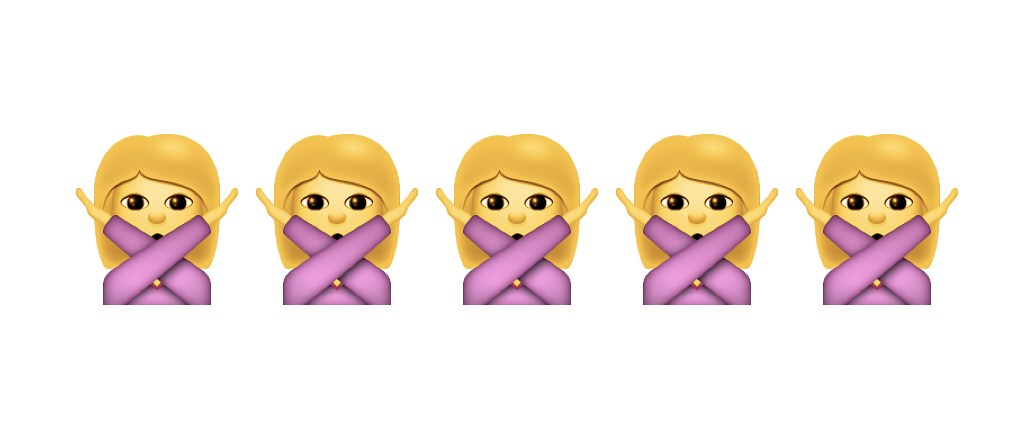
Whether it’s a custom keyboard or email subject line, brands are using emojis more than ever. But for consumers, they’re still getting it wrong.
According to a YouGov survey this month, 58 percent of 18- to 34-year-olds said brands using emojis in their messaging are “trying too hard.” The rest of the age spectrum feels about the same. It’s no surprise: Brands have eagerly jumped on the emoji bandwagon, whether it’s to laud their causes, promote competitions or stick them anywhere they can.
“When something is new, there’s a race to exploit it,” said David Carr, strategy director at Digitas LBi. “But people can take a step back now and ask, ‘Is this adding noise or value?’”
The novelty stage of using emojis as a sign that a brand is approachable has now passed, agency executives said. It’s no longer enough to write an emoji-filled tweet and expect to win awards.
“I think you can see the way in which brands use emojis is under scrutiny,” said Chris Nee, a senior editor working at agency We Are Social.
Retailer House of Fraser was a recent casualty. The retailer was widely ridiculed for its bizarre “emojional” Twitter campaign, which photoshopped images celebrities and models with emojis. House of Fraser said its plan was to connect with younger followers around Valentine’s Day, but instead it confused the hell out of Twitter. So much so, some users thought its account had been hacked by children.
Practice what you peach @KanyeWest! 😂 pic.twitter.com/yt6UQALdMv
— House of Fraser (@houseoffraser) February 1, 2016
Brands co-opting youth culture has long been a source of embarrassment for younger audiences. For people who use emojis on a daily basis, it’s cringeworthy to see their new visual language co-opted by those outside their circle. And for those who are outside the age bracket, it can feel alienating. For example, YouGov’s survey found 54 percent of respondents over 50 disagreed that emojis help people to understand each other better.
Ad position: web_incontent_pos1
“The creative way of finding meaning in emojis is down to the individual, so to use them in communications is a difficult trick to get right, to tap into that cultural phenomenon,” Nee added.
There’s also the question of long-term strategy. One exec admitted emoji-led creative was often about scoring press coverage rather than driving ROI.
“Our clients are interested in exploring the use of emojis to engage with consumers in a different way, but the problem comes up when brands make emojis the center of their own campaigns,” said Florence Lujani, who leads up the social team and influencer relations at J. Walter Thompson London.
But there’s a split on how to proceed. While some would see emojis included in more out-of-home creative and big, quirky ideas, others see them moving to become a more nuanced part of the writer’s arsenal.
Lujani said adding emojis into subject lines for certain clients had pushed up the open rate of their emails, which is backed up by recent data from AppBoy. However, Th_nk’s senior content strategist Vanessa Keys said her inbox is filled with emojis with little brand relevancy.
Ad position: web_incontent_pos2
“One look at my Gmail inbox reveals a whole load of megaphones, shooting stars and smiley faces with hearts for eyes,” she said. “Do they get my attention? Sure. Do they tell me something about the brand that I didn’t know before or entice me to share the content with my friends? No.”
More in Marketing

In the marketing world, anime is following in the footsteps of gaming
As marketers look to take advantage of anime’s entry into the zeitgeist, they might be wise to observe the parallels between the evolution of anime as a marketing channel and the ways brands have learned to better leverage gaming in recent years.

With the introduction of video ads and e-commerce, Roblox looks to attain platform status
Roblox is expanding into more areas than just ads in 2024. Much like platforms such as Amazon and Facebook have transcended their origins to evolve from their origins as online marketplaces and social media channels, Roblox is in the midst of a transformation into a platform for all elements of users’ virtual lives.

PepsiCo wants to remain a ‘driver of culture’ as it turns to influencers and activations amid rebrand
The soda-maker says it can translate cultural relevance into sales volume.
Ad position: web_bfu



